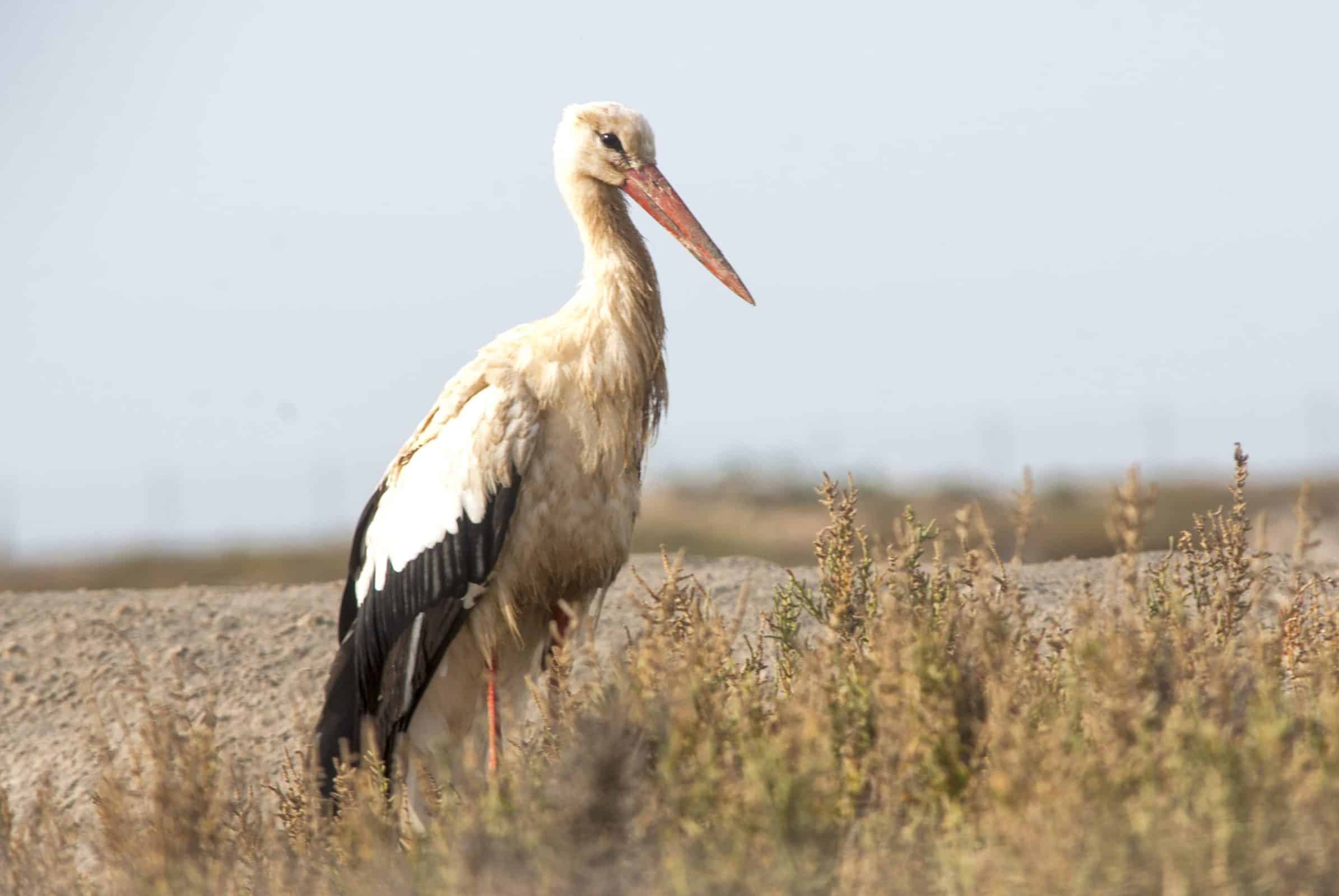Easily identified due to its white plumage, large size, long legs and neck and powerful bill. The plumage is white with black wing edges, its bill and legs are red.

Species 1
White Stork
Scientific name
Family 2
Taxonomic Affinity Group 3
Phenology 4
Although there are wintering populations in the Iberian Peninsula, it is a summer bird, with a distribution that practically excludes the Mediterranean area, so their visits to our latitudes are due to wandering individuals and even groups of migratory birds that follow the Mediterranean arc moving from central and northern Europe and heading to Africa. It is a bird that usually uses the geographical straits to cross the sea (the’ Campo de Gibraltar’ in our country), so that the specimens that reach our shores often need to rest and feed to continue the journey. It is however a rare sight in Roquetas de Mar.
The graph represents the probability of seeing a species during the year, grouped into months. The vertical axis indicates the percentage value. Each of the bars expresses its value. The horizontal axis represents the months: I = January, II = February, III = March, IV = April, V = May, VI = June, VII = July, VIII = August, IX = September, X = October, XI = November and XII = December.
Observation recommendations
It is not a bird which is often seen in our municipality, although there is a record of a flock composing approximately a hundred individuals resting in “Cerrillos”, what it can be seen are small groups or solitary individuals flying and resting. The most daring of these are seen on buildings, since they are accustomed to the presence of humans and, in their normal nesting areas, they replace the trees with electrical infrastructures (transmission towers) or buildings with towers or similar structures (bell towers of churches, etc.).
Observation areas where we can find it
Notes
[1] The names used are from the list of birds of Spain, drawn up by SEO/BirdLife and updated to 2019 (https://seo.org/listaavesdeespana/). The reference is: Rouco, M., Copete, J. L., De Juana, E., Gil-Velasco, M., Lorenzo, J. A., Martín, M., Milá, B., Molina, B. & Santos, D. M. 2019. Checklist of the birds of Spain. 2019 edition. SEO/BirdLife. Madrid.
[2] The taxonomic family to which it belongs is indicated.
[3] Traditionally, waterbirds have been grouped according to their taxonomy or “taxonomic affinity”, i.e., when some birds coincide in certain features that allow them to be classified scientifically, but without leaving the rigour of science, they are put together in these groups so that they can be easily recognised. These groups are the following: Greves (belonging to the Podicipedae family), Herons and Similar (includes the families: Ardeidae -Herons- Ciconiidae -Storks- and Threskiornithidae -Ibises and spoonbills-), Ducks (the whole Anatidae family), Coots and Similar (the family Rallidae corresponding to Rails, Gallinules and Coots), Cranes (also with only one family, the Gruidae), Waders , a heterogeneous group, the most diverse of this classification, includes the families Burhinidae (Stone-curlews), Haematopodidae (Oystercather), Recurvirostridade (Avocets and Stilts), Glareolidae (Pranticole), Charadriidadea (Plovers), Scolapacidae and finally Gulls and Similar (the recently unified family Laridae, i.e. Gulls and Terns).
[4] Phenology studies the relationship between the cycles of living beings and meteorological factors, and in our latitude these factors manifest themselves as variations throughout the year, thus relating the seasons to the birds’ cycles (breeding, migratory journeys, etc.) The graph shows the probability of seeing a bird depending on the month. It uses data from 48 bird censuses carried out between October 2016 and September 2018. The method used is that of a census route with sampling stations, with a total count on the sheet of water.
